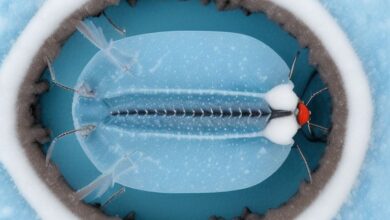Predicting Chronic Wasting Disease: A Regional Approach

Predicting Chronic Wasting Disease: How a Regional Approach is Changing the Game
Chronic Wasting Disease (CWD) is making headlines as a growing threat to wildlife across the United States. This lethal neurological disorder primarily affects deer, including white-tailed deer, mule deer, elk, and moose. Caused by prions—misfolded proteins that linger in the environment—CWD spreads through urine, saliva, and carcasses, raising serious concerns among wildlife experts and conservationists.
In an exciting development, researchers from Cornell University and other leading institutions have rolled out a groundbreaking tool designed to predict the spread of CWD with remarkable accuracy. This regional computer model and its accompanying user-friendly app are set to revolutionize how wildlife managers approach the disease, allowing them to target their surveillance and conservation efforts more effectively.
How the Prediction Model Works
The new prediction model is a game-changer for wildlife management. Published in Scientific Reports, the model identifies counties in 16 states where CWD is most likely to occur, based on conditions similar to existing CWD hotspots. This innovative approach breaks the cycle of isolated data and enhances regional assessments, giving agencies a powerful tool to combat the disease.
What Data Drives the Predictions?
The model is built on a comprehensive analysis of various data sources, including:
- CWD Case Data: Historical and recent data on CWD cases provide a foundation for predictions.
- State Regulations: Local laws and regulations influence how CWD spreads and is managed.
- Human Activities and Risk Factors: Activities like hunting and land development can affect the spread of CWD.
- Landscape Features: Geographic and environmental features contribute to the disease’s likelihood.
- Soil Properties: Soil conditions can affect prion persistence and spread.
By applying sophisticated algorithms to this data, the researchers tested four different models using 2020 data. The Light Boosting Gradient model emerged as the most reliable predictor, underscoring the importance of integrating regional data for effective disease management.
Collaborative Efforts Boost Success
The Cornell Wildlife Health Lab’s Surveillance Optimization Project is at the heart of these efforts. This project provides a suite of resources for wildlife professionals, including:
- Custom Software: Tools for standardizing and managing CWD data.
- Chronic Wasting Disease Data Warehouse: A central repository for disease information.
- Computer Models: Advanced models for predicting and analyzing CWD spread.
- Disease Data from Other States: Access to a broader range of data enhances predictions.
This initiative is a testament to collaborative science. It involves contributions from various institutions, state agencies, and federal organizations. Notable supporters include the Michigan Disease Initiative, the U.S. Fish and Wildlife Service, the Florida Fish and Wildlife Conservation Commission, the Tennessee Wildlife Resources Agency, and the New York State Department of Environmental Conservation.
The Fight Against CWD
Early detection and proactive surveillance are crucial in the fight against CWD. By identifying potential outbreaks early, wildlife professionals can cull infected deer before the disease spreads further. The regional prediction model and app are essential tools in this process, allowing managers to focus their resources where they are needed most and prevent the disease from becoming more widespread.
Although CWD currently affects only deer and related species, there are concerns about the potential for the disease to spread to other animals, including humans. With CWD now found in 34 states, ongoing surveillance is critical to prevent new outbreaks and manage reintroductions from affected areas.
Why This Matters
By harnessing the power of data and collaborative research, wildlife experts are better equipped to tackle CWD. This proactive approach not only helps protect deer populations but also safeguards ecosystems from the potentially devastating effects of the disease. With these innovative tools, experts can stay ahead of CWD and ensure healthier wildlife for future generations.
Stay informed and involved in the fight against Chronic Wasting Disease. For more updates and information on how you can contribute to wildlife conservation efforts, keep an eye on resources from the Cornell Wildlife Health Lab and related agencies.



